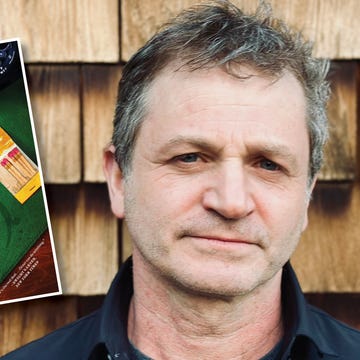Believe it or not, the killing of sea urchins is encouraged along parts of California’s coast. Why? In her latest for Alta Journal, “Kill an Urchin, Save a Sea,” Kailyn McCord dives in and explores the numerous reasons experts say urchin culling is beneficial. In this special Alta Live, we’ll go a little deeper (into the subject, not the Pacific) to discover why these little creatures are causing such a big problem. Join us as we welcome biologist Maya Munstermann for a fascinating look into the life—and death—of West Coast sea urchins.
About the guest:
Maya Munstermann is currently a PhD candidate at the University of California, Berkeley in the integrative biology department with research focusing on the effects of climate change and marine heat-wave events on kelp forest ecosystems. Through a variety of methods, such as SCUBA field sampling, genomics, and experimental and statistical modeling, she is interested in uncovering how warming oceans are playing a role in ecosystem shifts from kelp-dominated states to urchin barrens. Her studies focus on purple sea urchins from both the larval and benthic adult life history stage perspectives and how rising temperatures, food availability, and habitat of origin influence resilience or vulnerabilities to climate change. Her work directly relates to marine conservation and management practices along the California coastline.
Here are some notable quotes from today’s event:
- On what urchins are: “Urchins are benthic, which means they walk around the ocean floor. They’re invertebrates, which means they don’t have a spine. And so these marine benthic invertebrates play a really important herbivore role in the marine ecosystem, especially in kelp forest ecosystems; they eat algae. They have pentaradial symmetry, which means that they have this star organization—they’re actually quite closely related to sea stars as well.”
- On smashing urchins as a recreational activity: “I want to be very clear up front. I don’t think everyone should be going out and killing urchins—that is not the right thing to do. Also, purple urchins are native to the California coastline, and it’s because of human influence that this ecosystem has been shifted out of balance. I don’t think everyone should go out killing urchins in the tide pools because they serve a really important role in the ecosystem as herbivores. Now that being said, I also want to say that urchin barrens are a huge issue on the North Coast right now.”
- On what urchins eat apart from kelp: “There are other algae available, not just kelp. There’s reds and other greens that they can graze on. There’s also something called crustose coralline algae.… And you know, it’s not as appetizing for them to eat, but if it’s the only thing they’ve got left, then that’s what they’ll eat. And then the last thing that we’ve noticed is that they reduce their metabolism. It’s kind of like they’re waiting out the storm for something to come by; if a piece of drift algae comes by, they’re going to grab it and chomp it up. While they’re waiting for conditions to become more optimal, they just kind of go into, I don’t want to say hibernation because that’s not what it is, but they reduce their metabolism so they can hold on until they can get food down the line.”
Check out these links to some of the topics brought up this week.
- Read “Kill an Urchin, Save a Sea,” by Kailyn McCord.
- Check out more of Munstermann’s work.
- Find out more about the Bodega Marine Laboratory.
- Learn why California needs kelp forests.
- Read what New Zealand is doing to manage its urchin problem.
- Learn about sea star wasting syndrome.
- Learn more about kelp forest conservation efforts with the Nature Conservancy.•











